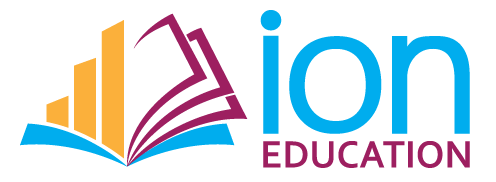Why National Benchmarking Falls Short: How Local ROC Analysis with ion Uncovers More Students in Need of Intervention
If you’ve worked with benchmark assessments for any length of time, you’ve probably encountered “linking studies.” These studies essentially serve as a crystal ball for predicting student performance on state assessments based on benchmark test scores. They tell you: "If a student scores X on our benchmark, they’re likely to score Y on the state assessment." Sounds pretty useful, right?
Well, not so fast.
These linking studies, while valuable, are typically based on national or state-level data. But here’s the problem: very few school districts actually look like the national average. Your district may have unique demographics, economic factors, curriculum choices, and even staffing patterns that differ significantly from the national picture. While the national data might give you a general idea of where your students stand, these studies can overlook local nuances that could lead to students falling through the cracks.
This is where ion’s ROC analysis tool steps in to fill the gap—and the results are eye-opening.
ROC Analysis: A Local Approach to Pinpoint Student Needs
ROC (Receiver Operating Characteristic) analysis is typically used in benchmark studies to establish the probability that a student will achieve a particular outcome, like passing a state assessment. It’s great at identifying those cut points—thresholds that help educators determine when students are on track or when they might need intervention.
But here’s the catch: those cut points are often based on national datasets.
With ion’s built-in ROC analysis tool, we can perform what we call a local linking study—one that is custom-tailored to your district’s data. This means we’re not just relying on generalized national norms. Instead, we use your students’ performance data to establish highly accurate cut points for predicting state assessment outcomes.
Why Local ROC Analysis Matters: Closing the Gap
In our experience, adjusting these cut points based on local data has allowed districts to identify 2–4 more students per grade level who need intervention—students who might have been overlooked if we relied solely on national linking studies. Think about the difference this makes:
- More Accurate Intervention: National data can paint with too broad a brush. By fine-tuning cut points based on local realities, you can pinpoint students who are at risk but might not seem so at first glance using national averages.
- Targeted Support for More Students: Imagine being able to intervene with 2–4 more students per grade level. For these students, that extra support could mean the difference between slipping through the cracks and staying on track.
- District-Specific Insights: National linking studies don’t account for your district’s specific challenges—whether that’s higher numbers of English language learners, students from low-income households, or variations in curriculum and staffing. Our local ROC analysis tool captures your data, delivering insights that reflect your district’s reality.
The Impact: 2–4 Students Per Grade Level
When districts implement ion’s local ROC analysis, the results are clear: more students are flagged for intervention. These aren’t just numbers on a page—these are real students who might otherwise have been overlooked. In some districts, this has translated into 2–4 additional students per grade level being identified for extra support.
For the district, it’s a win. But for those 2–4 students? It could be life-changing.

The Power of Local Data
It’s tempting to rely on national norms because they’re easy and widely available. But when you dig into your local data, the insights you uncover are far more powerful. With ion’s ROC analysis tool, you’re not just following national trends—you’re creating a custom pathway to success for your students, based on their actual performance, in their specific context.
Ready to see how ion’s ROC analysis tool can uncover more students in need of intervention?
Sign up for a demo today and discover how a local linking study with ion can give you more accurate cut points, more tailored interventions, and more student success stories. Let’s make sure every student gets the support they need—because missing even one is one too many.
